Nicos Manessis, author, Greek wine critic at Decanter, and ambassador for Greek wine, knows the hidden vineyards of Corfu like the back of his hand. He’s traversed its wine paths and gotten lost in the undergrowth of its wild nature, where the grapevines coexist with the most incredible vegetation. He’s also crossed a staggering 73,000km of international wine routes. This “off-beat Corfiot,” as he refers to himself, adores his homeland and is committed to the revival of its vineyards. We walked this magical terra incognita with him, discovering unknown wineries, and farmed and wild vineyards, where the white Kakotrygis and red Skopelitiko grape varieties, as well as dozens of other indigenous, untried grape varieties flourish.
Nicos Manessis told us stories about “bevanda,” a low-grade wine made from pressed grapes that the poor people of Corfu used to drink, and how Kakotrygis was the famed wine of the Phaeacians offered by King Alcinous to Odysseus, praised by Xenophon, and described by Athenaeus in his “Deipnosophistae” as “pleasant when aged.” In the early 19th century, Stylianos Vlasopoulos mentioned in his “Statistics and Historical News about Corfu” that approximately 120,000 barrels of wine were produced annually. We speculate that this referred to the same variety, Kakotrygis. With our esteemed guide we also visit Nikos Kotinas, a local agronomist and oenologist, a devoted supporter of local vineyards who shares Manessis’ views on their revival, who explains that “where you see olive trees growing today, there were once vineyards.”
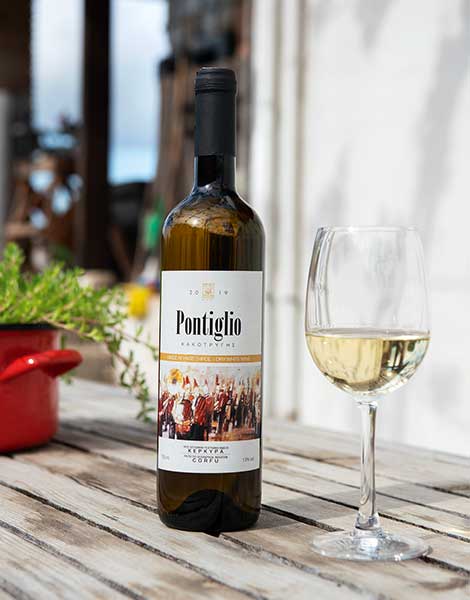
© Alexandros Avramidis
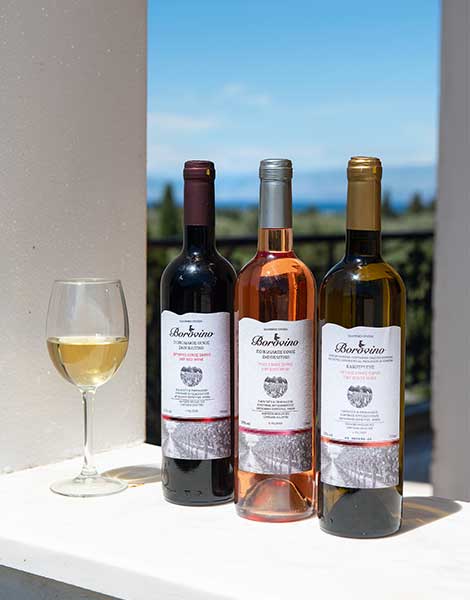
© Alexandros Avramidis
From the two men and the vineyards I learn that Kakotrygis, with its tough, almost woody stem, was a challenging prospect for cultivators – hence the name Kakotrygis, which means “hard to cultivate.” Eventually, the vines were uprooted to make way for olive trees. However, Kakotrygis was the wine that sustained the rural families of Lefkimmi and supported Corfu’s economy for centuries. It is an oxidable white grape variety that produces high-grade wines with characteristics reminiscent of red wine.
Kakotrygis can produce a range of wines, from sparkling to aged, full-bodied wines, with distinctive tannins, extractive qualities, and a long aftertaste. According to Nikos Kotinas, “they have all the prerequisites to become Protected Designation of Origin (PDO) wines,” and, according to Manessis, “they’re gastronomic wines that pair well with food.”
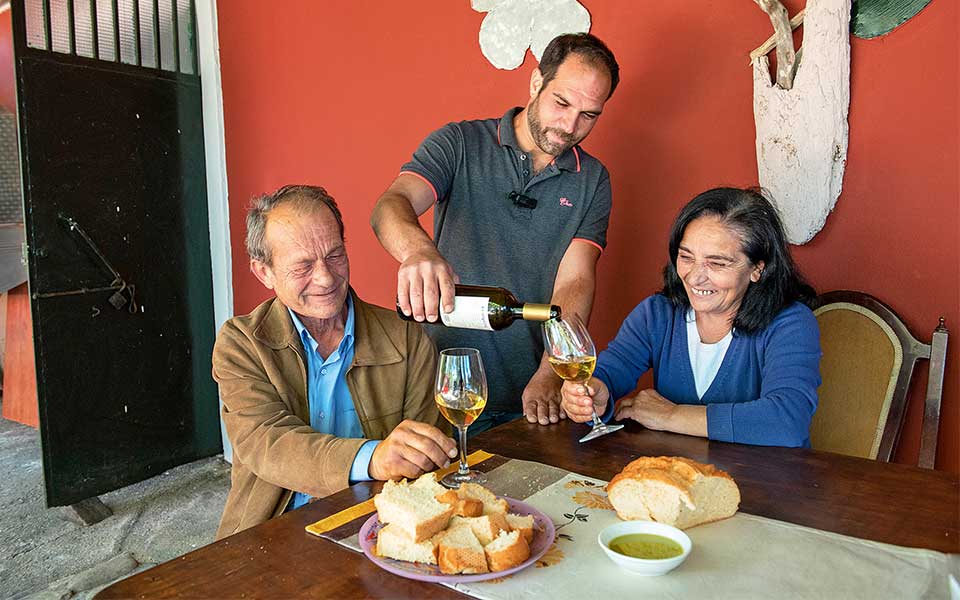
© Alexandros Avramidis
Wine tasting at the island’s wineries
It takes about two hours by car to traverse Corfu. Its main vineyards, the island’s most productive, have always been in the south. This is where most of the small, family-owned wineries are located, some exclusively involved with the cultivation and vinification of local grape varieties. Visiting these wineries is a beautiful experience, as the tours and tastings are conducted by the owners themselves.
At the southernmost point of the island, you’ll find Pontiglio (Neochori, Lefkimi, Tel. (+30) 26620.228.66), a small winery resembling a wooden chalet located just outside Neochori. This vineyard owned by the family of Babis Tarabaras dates back to the mid-19th century, while he built the winery in 2014 with Athina Kirtzolgou and her daughter, Konstantina Dini. In collaboration with oenologist George Sgouros, they produce wine using the traditional method of fermentation in “trockola” (large clay jars), and the grape must is transferred to underground tanks using the force of gravity. In our glasses, the white Pontiglio, full of floral aromas, exhibits a very refined palate. It is a modern wine with a refreshing, lemony aftertaste.
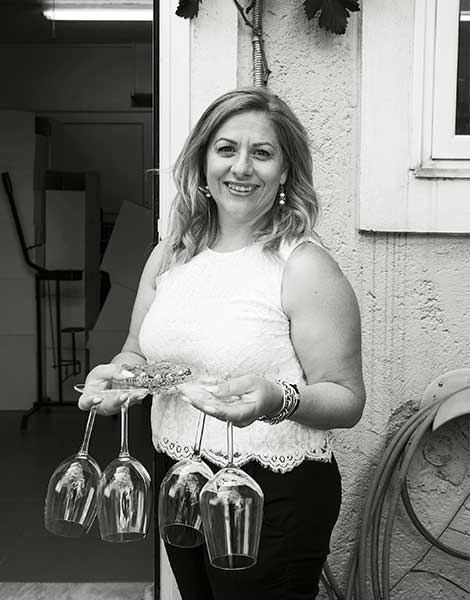
© Alexandros Avramidis
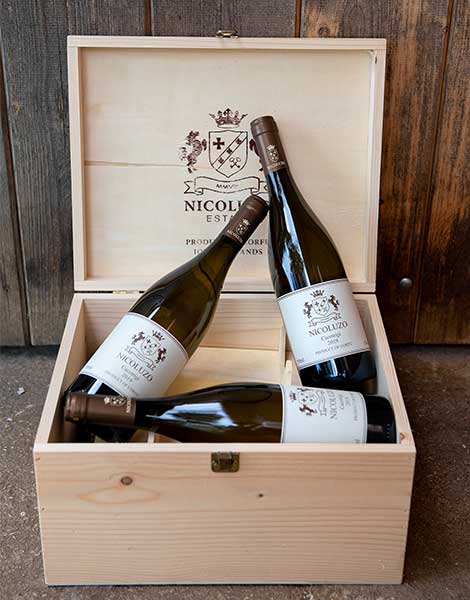
© Alexandros Avramidis
Very close by and a little further north, in Lefkimmi (Tel. (+30) 697.491.3285, 698.051.1235), we find Borovino. The centerpiece of this small winery is a carefully tended vineyard in the area of Strafelia, 500m from the sea; one of the best vineyard plots in the area. Here they cultivate Kakotrygis, both from new plantings and old roots, as the area is considered the flagship of Corfu’s vineyards. Borovino winery is the result of the collaboration between Alekos Koulouris, Akis Chrysikopoulos, and Fotis Chrysikopoulos, who produce as much wine as their vineyard allows, under the supervision of oenologist Nikos Kotinas. Their wine has finesse, subtle tannins, with a fresh and citrusy aftertaste.
Traversing dense olive groves through the verdant routes towards the north of the island, we cross the Korission Lagoon with its cedar tree forest and sand dunes, to reach the winery of the Livadioti family (Halikounas, Tel. (+30) 26610.763.81), which was founded in 1989. Today, their production reaches 10,000 bottles. They were the first to initiate the process for obtaining the PDO (Protected Designation of Origin) Corfu for Kakotrygis, and removed olive trees to plant vines. Their early Kakotrygis is golden, high-grade with pronounced acidity, sweet beeswax aromas, and light tannins, “a red wine that pretends to be white,” as they say. Their red wine, 100% Skopelitiko from Grava, stands out for its peculiarity in flavor; it is light, with pleasant tannins and good acidity.
Nicoluzo Estate (Ano Korakiana, Tel. (+30) 694.377.7728) is located in the northern part of the island, near the mountainous medieval village of Kato Korakiana, renowned for its high-end restaurant “Etrusco,” owned by Michelin-starred chef Ettore Botrini. In the area around the village of Upper Korakiana, with its 37 churches, siblings Tasos and Irini Nicoluzo have planted their vineyards in a spectacular terroir, a jungle of wild pear trees, cypresses, centenarian olive trees, quince and beech trees, “in soils that have been fallow for 50 years,” they say. They mainly cultivate the local Skopelitiko and Kakotrygis grapes, red and white grape varieties respectively. However, they have documented 15 other unknown local varieties, including Amfioni, Gouzaniti, Mantzavi, Fidia, Korfiati, Petrokoritho, Xiropodia, Agoumasto. Of their production, which has not exceeded 10,000 bottles, approximately 95% is exported.












